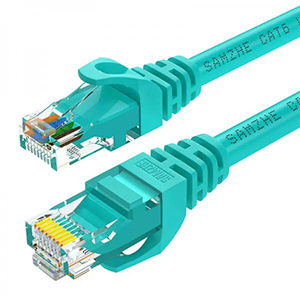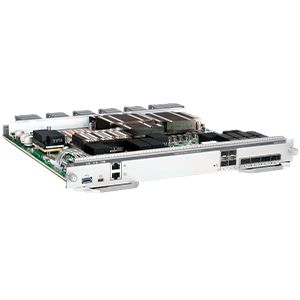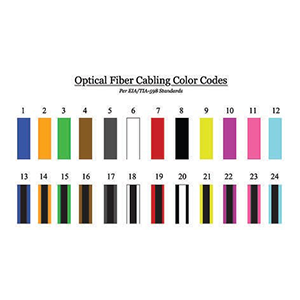Hello everyone! As an important transmission medium in network connections, Ethernet cables’ physical characteristics directly affect the speed and stability of the network. Among the many Ethernet cable standards, CAT5 and CAT6 cables also show some differences in their corresponding RJ45 connectors due to their different transmission properties. Today, gracyfiber is pleased to provide you with a detailed comparison of the similarities and differences between CAT5 and CAT6 RJ45 connectors, to help you better understand the applicable scenarios of the two connectors in practical applications, and to provide valuable information for you to choose appropriate Ethernet cables and connection equipment. reference.
Basic introduction to RJ45 connector
Let me introduce to you the basic situation of RJ45 connector:
Structure and function of RJ45 connector:
- RJ45 is a commonly used 8-core wiring plug, usually used for Ethernet LAN connections.
- It consists of a plastic shell and 8 metal contacts to reliably connect the cable cores.
- The RJ45 connector can provide bidirectional signal transmission for Ethernet data and power supply.
- Through the RJ45 connector, the network cable can be connected to network equipment such as switches, routers, etc.
Standard application of RJ45 in Ethernet connection:
- RJ45 connectors are widely used in the field of Ethernet, especially 10/100/1000Mbps Ethernet.
- The Ethernet standard specifies the pin definition and line sequence arrangement of the RJ45 connector to ensure interoperability between devices.
- Common line sequences include straight-through lines (T568A/T568B) and crossover lines, which are suitable for different connection scenarios.
- The reliable physical connection method of the RJ45 connector makes it the preferred interface for Ethernet cabling.
Different types and specifications of RJ45 connectors:
- RJ45 connectors come in various sizes and shapes, such as standard RJ45, mini/micro RJ45, etc.
- In different application scenarios, different types of RJ45 can be selected, such as shielded/unshielded, steel shell/plastic shell, etc.
- RJ45 connectors are also divided into male and female connectors, which are used for network cable production and device port connection.
- In addition, RJ45 connectors are divided into rigid and flexible types to meet the needs of different wiring environments.
To sum up, the RJ45 connector, as a standardized interface for Ethernet connection, plays an indispensable role in the connection of network equipment. Understanding its basic structure and application characteristics will help you better deploy and maintain Ethernet systems.
The difference between CAT5 and CAT6 Ethernet cables
Let me compare the main differences between CAT5 and CAT6 Ethernet cables in detail:
Physical characteristics of CAT5 and CAT6 cables:
- CAT5 cable uses thicker 24AWG wire with an outer diameter of about 5-6mm.
- CAT6 cable uses thinner 22AWG wire with an outer diameter of about 6-7mm.
- The insulation and shielding layers of CAT6 cables are more complete to reduce crosstalk and interference.
- The overall structure of CAT6 cable is stronger and more suitable for long-distance wiring applications.
Differences in transmission bandwidth and speed between the two cables:
- CAT5 cable theoretically supports 100Mbps Ethernet, and can actually reach up to 1000Mbps.
- CAT6 cable theoretically supports 1000Mbps Gigabit Ethernet, and can actually reach up to 10Gbps.
- CAT6 cable has better high-frequency characteristics and better performance in high-speed transmission.
- This also results in the cost of CAT6 cable being slightly higher than CAT5, but it is more cost-effective.
Characteristics of RJ45 connectors for CAT5 and CAT6 cables:
- CAT5 cables are usually used with standard RJ45 connectors.
- CAT6 cables require the use of specialized CAT6-rated RJ45 connectors to ensure performance.
- CAT6 RJ45 connector has better shielding and contact performance, and can better match CAT6 cables.
- Using mismatched RJ45 connectors may reduce overall transmission performance.
In general, CAT6 cables have significantly improved performance compared to CAT5, especially in high-speed Ethernet transmission. But the cost of CAT6 cables and connectors also increases slightly. The selection needs to be weighed based on the needs of the actual application scenario.
The similarities and differences between CAT5 and CAT6 RJ45 connectors
Let me compare the similarities and differences between CAT5 and CAT6 RJ45 connectors in detail:
Differences in appearance size:
- The overall dimensions of CAT5 and CAT6 RJ45 connectors are basically the same, and both use standard RJ45 specifications.
- However, the casing of the CAT6 connector is slightly thicker to accommodate the more complex internal structure.
- This size difference is not significant, both connectors can be plugged into a standard RJ45 network port.
The difference between the number and arrangement of pins:
- Both CAT5 and CAT6 RJ45 connectors use a standard 8-pin arrangement.
- But the internal pin layout and shielding design of CAT6 connectors are more sophisticated.
- This can better reduce signal interference and improve transmission performance.
Compatibility and performance differences:
- CAT5 RJ45 connector can be used with CAT5, CAT5e cables.
- CAT6 RJ45 connector is specially designed for CAT6 cable to achieve higher performance.
- If you use CAT5 connectors to connect CAT6 cables, the overall transmission quality may be reduced.
- On the contrary, CAT6 connectors can be compatible with CAT5 cables, but they cannot take advantage of the full performance advantages of CAT6.
To sum up, there is not much difference in size between CAT5 and CAT6 RJ45 connectors, but there are certain differences in internal structure and performance. To maximize cable performance, CAT6 cables should be connected using matching CAT6 connectors. This ensures network transmission quality and reliability.
How to choose the appropriate RJ45 connector
When choosing an RJ45 connector, you need to consider the following factors:
Select CAT5 or CAT6 RJ45 connector according to network application scenario:
- If the network application only needs to support 100Mbps Ethernet, CAT5 connectors can meet the needs.
- If you need to support Gigabit or higher Ethernet transmission, you should choose a CAT6 connector.
- For network applications that may be upgraded in the future, choosing CAT6 connectors will be more appropriate and forward-looking.
Consider bandwidth requirements and transmission distance requirements:
- If the network application only requires lower bandwidth and the transmission distance is short, the CAT5 connector is sufficient.
- But if higher bandwidth and longer transmission distance are required, CAT6 connectors will be more suitable.
- CAT6 connector provides better anti-interference performance to ensure long-distance transmission quality.
Recommendations for using CAT5 and CAT6 RJ45 connectors in actual network cabling:
- Try to choose an RJ45 connector that matches the cable type for best performance.
- Use professional tools to make the connectors in accordance with the standard wiring sequence and process requirements.
- Regularly check whether the connector connection is firm to avoid performance problems caused by poor contact.
- If you encounter a network failure, you can first check whether there is a problem with the RJ45 connector.
In short, when selecting an RJ45 connector, you need to comprehensively consider factors such as specific network application scenarios, bandwidth requirements, and transmission distance. Choosing the appropriate CAT5 or CAT6 connector, and installing and maintaining it in the correct way can effectively ensure the stable operation of the entire network system.
Summary
In summary, although there are certain differences in appearance and pin arrangement between CAT5 and CAT6 RJ45 connectors, both play a key role in Ethernet connections. CAT6 connector has better transmission performance than CAT5 and can support higher bandwidth and speed, but it also requires higher cable specifications to take advantage of its advantages.
When selecting an RJ45 connector, you need to consider the actual network application scenarios and bandwidth requirements, as well as the compatibility and ease of deployment of the connector to ensure the stability and reliability of the network connection. Our professional technical team is ready to provide you with a full range of Ethernet cable application support. If you have any questions during the selection or deployment of RJ45 connectors, please feel free to contact us for communication.
FAQ about this article
The main difference is the physical design of the RJ45 connector. Cat6 connectors have a slightly larger and more robust body compared to the standard Cat5/5e connectors.
Yes, Cat5 RJ45 connectors can be used with Cat6 cables, as the cable termination is the same. However, this may not provide the full performance benefits of the Cat6 standard.
Yes, Cat6 RJ45 connectors can be used with Cat5 cables, as the cable termination is compatible. But again, this may not fully utilize the capabilities of the Cat6 connector.
Cat6 connectors typically have a larger and more shielded body, as well as a better locking mechanism to provide a secure connection. They may also have additional features like strain relief.
The basic termination process is similar, but Cat6 connectors may have slightly different requirements, such as the need for more precise cable and wire preparation.
The more robust design of Cat6 connectors can help minimize signal degradation and interference, supporting the higher bandwidth capabilities of the Cat6 standard.
Yes, you can mix Cat5 and Cat6 connectors, but the overall network performance will be limited to the lower standard (Cat5) in that case.
There are generally no compatibility issues, as the RJ45 connector design is the same. However, the network performance may be degraded.
It is generally recommended to use the RJ45 connectors that match the Ethernet cable standard (Cat5 for Cat5 cables, Cat6 for Cat6 cables) to ensure optimal performance and reliability.
RJ45 connectors can be found at electronics retailers, online stores, or specialty cable suppliers. Key factors to consider include the connector quality, compatibility with the cable type, and any additional features like shielding or strain relief.




